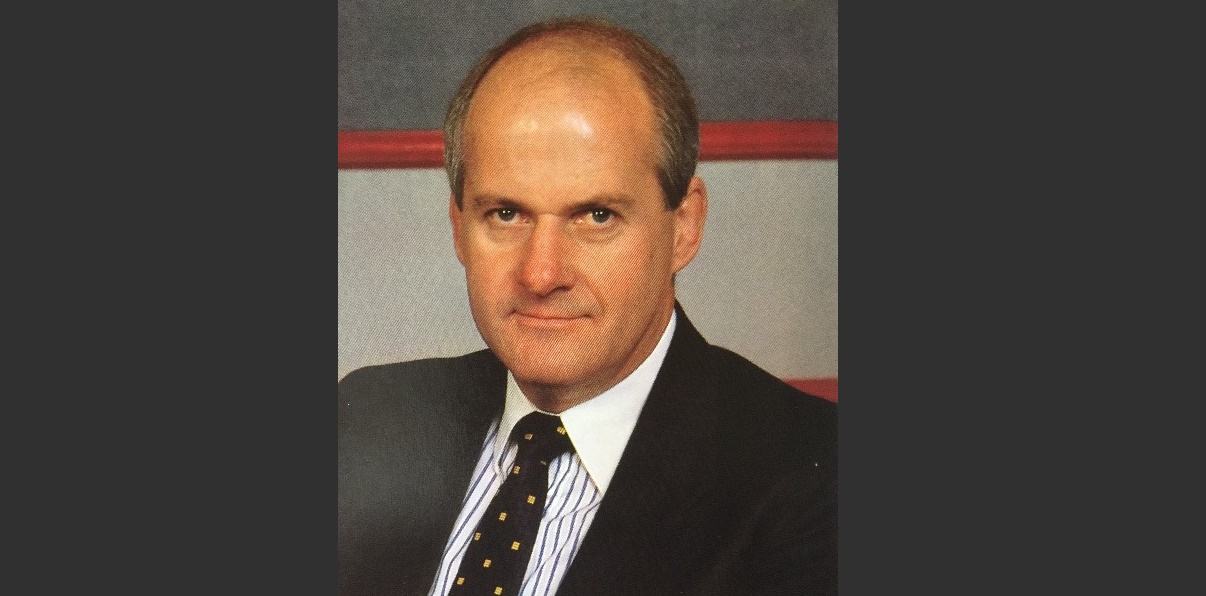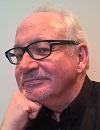Preamble
The Australian Computer Society (ACS) was formed 50 years ago, when the various state computer societies joined forces.
To mark the occasion, the ACS has initiated a heritage project to honour the many individuals who have contributed to the growth of the ICT profession in Australia.
At the heart of the project is a history of computing in Australia. It is not just a history of the ACS, but the history of a profession.
Australia has the longest computing history of any country, excepting the US and the UK, and CSIRAC in the Museum of Victoria is the oldest computer still in existence.
Chapter 31: Birth of Australian software and services industry
The 1960s and 1970s saw the birth and growth of local and international companies in supplying software and services to Australia’s growing computer industry.
As more and more Australian companies began to computerise, there emerged a need for expertise in helping them install, implement and manage their expensive new devices. It did not take long for enterprising individuals to identify opportunities and form businesses to meet this growing need. Three of the earliest and most successful were Adaps, Datec and Computer Power.
Adaps
Adaps, which stands for ‘Australian Data Processing’ was formed in 1964 by John Thompson and Peter Monahan. It began in Melbourne as a computer bureau, processing information for The Age and ANZ bank. It soon started providing programming services, and within a few years had 200 staff, all of them under 30. It listed on the Stock Exchange in 1969 – the first Australian IT company to go public.
But Adaps overextended and began to lose money. The problems were blamed on poor financial control. In 1972, control changed hands, with Melbourne’s Jelbart family gaining a majority shareholdings and John Thompson selling out. The Jelbarts reorganised the company but did not return it to profitability until 1974. They moved the company into packaged software development in such areas as motor vehicle registration and library software systems. It also continued as a batch processing bureau and with the provision of programming services.
In 1984, Adaps was sold to Idaps, another Australian owned software and services company which specialised in the insurance industry. Idaps changed its name to Paxus in 1988 and evolved into an IT recruitment company. It was subsequently acquired by giant US IT services company CSC, which in 2013 sold it to South African IT recruitment company Adcorp.
The Adaps name did not disappear. In 1996, former marketing director Paul Halstead and founder John Thompson started a new company, which they also called Adaps, which specialised in IT contract services. It still exists today as an IT recruitment company, under completely different ownership.
Datec
Another major force in the early years of Australia’s IT services industry was Datec, founded in Melbourne in 1965 by a group of computer consultants. In 1966, they employed Harry Douglas to open a branch in Sydney. Within 12 months Douglas bought the NSW branch himself, and after the parent company went broke through mismanagement, he re-established the Datec brand in Sydney, Melbourne and Canberra.
Douglas became one of the best-known figures in the Australian computer industry in the 1970s and early 1980s. He had spent ten years with the Royal Australian Navy, where he qualified as an electrical engineer, and was the first IT specialist with management consultancy WD Scott.
Datec became Australia’s largest privately owned software and services company. It had 60 staff by 1975 and 200 by 1983. It was acquired by French-Canadian software and services company DMR in 1984. DMR was itself acquired by Amdahl in 1995 as part of that company’s attempt to diversify from mainframe hardware (see Chapter 29).
In the mid-1970s, Datec’s revenue came from contract programming (30 percent), turnkey software development (25 percent), consulting and advisory activities (20 percent), systems analysis (20 percent) and education (5 percent). It had a large profit margin, and established a reputation for lavish parties and generous corporate entertainment.
In 1983, Datec conducted an extensive survey of Australia’s computer market, surveying all major installations. The survey found that 69 percent of Australian IT using organisations used commercially available applications packages, and at the growth of such packages was quickly increasing. Packaged software, from international and Australian suppliers, was to eventually lead to the demise of software and services companies like Adaps and Datec.
Computer Power
One of the largest Australian software and services companies of the 1970s and 1980s was computer Power. It was founded in Melbourne in 1968 by Jack Vale, a US computer entrepreneur living in Australia. Vale was something of a technical guru and had attracted finance to build a software development company in Melbourne
In 1973, the company ran into financial difficulties and Vale hired 28-year-old Roger Allen as managing director to sort things out. Allen had applied for the job after seeing an advertisement for the position in The Age newspaper.
Allen had started as a programmer with insurance company National Mutual, a large IBM mainframe user, ten years earlier. He then joined Datatec in 1966. When Datec got into trouble (see above) he joined oil company Mobil, one of Datec’s clients. In seven years, he rose to become head of software development before moving into marketing and management.
When Roger Allen joined Computer Power, the company was losing money. Jack Vale’s business strategy was to develop and market complex software, but the lead times were too long. It did have one success, developing a COBOL compiler for the new DEC PDP-8 minicomputers, that went largely unrecognised. Another piece of software that company was developing was a pre-press system for newspapers and printers. Allen assessed that it was unviable, and Vale left the company he had founded.
The COBOL compiler eventually caught the eye of US computer giant McDonnell Douglas, which invited Allen to St Louis in 1974 to discuss the software and related projects. The US company ended up giving Computer Power $100,000 to develop software using POGO, a programming language that was another of Vale’s ideas. Computer Power was soon a major contractor to McDonnell Douglas, and with a steady income stream, the company was on its way.
The company grew quickly, and in the 1970s set up separate divisions for services, training, and hardware and software sales. It acted as prime contractor for a number of major computer deals, bringing together the appropriate hardware and software vendors and acting as the systems integrator and implementer.
In 1978, Roger Allen chaired an Australian Computer Society committee set up to advise the Federal Government on the future of the software industry in Australia.
Computer Power’s biggest deal to date was for the Department of Social Security’s massive STRATPLAN project in 1983. But even larger was a billion-dollar systems implementation deal with the Australian Taxation Office, in 1989. Both deals involved multiple Amdahl mainframes.
In 1984 Rupert Murdoch’s News Limited bought a one-third shareholding in Computer Power. Shortly afterwards Johnstone sold out and Allen and News Limited became 50-50 partners.
Computer Power started a venture capital arm, CP Ventures, in 1985. It was headed by Roger Buckeridge, a former public servant and McKinsey consultant. It became a separate public company and was sold in 1990.
Computer Power listed on the Australian Stock Exchange in 1987. Its US operation was sold to Florida-based training and employment company Interim Services 1995, at which time Allen left the company. Interim acquired the whole company in 1999 for US$200 million.
In 1989, Computer Power restructured and closed its software products and hardware product divisions, on the basis that these had become competitive with many of its important clients.
A group of ex-Computer Power employees formed a company called EXECP (which stood for EX-Employees of Computer Power) to take over the distribution of the software products. That company was sold to South African software and services company AST in 2000.
In 1996, Allen started Allen & Buckeridge, a venture capital firm, with Roger Buckeridge, whom he had worked with at CP Ventures. He was awarded the Pearcey Medal for significant contributions to the Australian computer industry in 2007. From 1990 to 1997, he was deputy chairman of Austrade.
Computer Power had acquired the Control Data Institute in 1989 with Control Data’s decline (see Chapter 26) and renamed it the Computer Power Institute. In 1988, it also acquired Management Technology Education (MTE), a major Sydney-based computer training and seminar company.
After Computer Power was acquired by Interim, the Computer Power Institute name was retained for the training arm, which remained an independent operation. It is still in existence today, after many changes of ownership.
Veteran ICT journalist Graeme Philipson is researching and writing the Heritage Project book, which is due for release on the 50th anniversary of the formal incorporation of the ACS, on 3 October 2017.
The project also involves the creation of a ‘virtual museum’, cataloguing hardware and other artefacts, and collecting and curating documents on the history of the industry, including oral histories of as many people as possible.
Please get in touch with Graeme if you would like to contribute, at [email protected]
Do you have early memories of the ICT industry in Australia? Help us make history by sending us your story! Record or write your memories to be included in our historic ACS Heritage Project. Details here.
Previously published:
Chapter 30: The rise and decline of the PCMs
Chapter 29: ‘Plug compatible manufacturers’ take on IBM
Chapter 28: The rise of Fujitsu
Chapter 26: The rest of the BUNCH
Chapter 25: Honeywell in Australia
Chapter 23: ACS at home and abroad
Chapter 22: The early years of the Australian Computer Society
Chapter 21: Other Australian universities
Chapter 20: University of Melbourne and Monash
Chapter 19: Sydney University and UNSW lead the way
Chapter 18: Computing in the Australian Government
Chapter 17: Trevor Pearcey and the birth of CSIRONET
Chapter 16: Enter the minicomputer – DEC comes to Australia
Chapter 15: The IBM S/360 in Australia
Chapter 14: IBM redefines the computer industry
Chapter 13: Control Data Australia (part II)
Chapter 12: Control Data Australia (part I)
Chapter 11: The Australian Computer Society
Chapter 10: Five Computer Societies
Chapter 9: Australian made, Australian designed
Chapter 8: Australia's Computer Industry in 1962
Chapter 5: SILLIAC and the Snowy Mountains Scheme
Chapter 3: Harry Messel and the birth of SILLIAC










